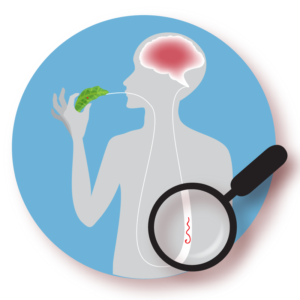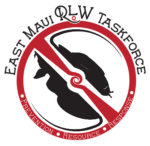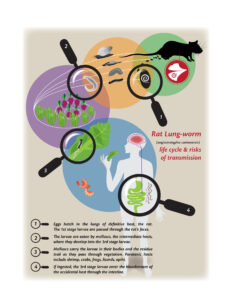SYMPTOMS – DIAGNOSIS – TREATMENT

Be alert to symptoms. Symptoms include hypersensitive skin, severe headache, paresthesia (a burning or prickling sensation that is usually felt in the hands, arms, legs, or feet, but can also occur in other parts of the body), and pain that moves from one area of the body to another. The vague initial symptoms mimic other diseases, like lepto spirosis and typhus: these must be diagnosed and treated with antibiotics quickly. If these or flu-like symptoms appear, see your doctor immediately.
Symptoms are caused when the parasitic worms move into the brain, or when the worms die in the brain and then are attacked by the body’s immune system, causing an inflammatory reaction. The severity and duration of the symptoms depends largely on the load of parasites consumed. The disease can be relatively mild and resolve with minimal intervention in a few weeks, or it can be a severely debilitating, chronic illness with neurological symptoms persisting for months or years after initial infection.
DIAGNOSIS
Currently, a lumbar puncture (LP – aka spinal tap) is the only confirmed method of diagnosis according to the Department of Health. Lumbar punctures are safe, nearly painless, and can also help relieve the severe headache symptomatic of the disease. If you believe you may have the disease, having an LP done is highly recommended for a firm diagnosis and appropriate treatment plan.
TREATMENT
Steroids like prednisone counter the inflammation from meningitis. Pain medications may be administered. Some patients have found acupuncture helpful. Many patients report that once past the initial infection stage, physical activity is helpful at relieving symptoms. Good nutrition is important, including vitamin and mineral supplements.
Other suggestions from RLW patients:
- Working with the neurosomatic exercises to regain the functioning of the left and right parts of the brain.
- Chaga, Reishi and Lions Mane daily helps with the nerves and brain healing.
- Bathing in warm-hot water with salt to soothe the extreme skin sensation.
- Baking soda in the water and rubbed on the body to help with extreme itching and burning.
- Regulating body temperature by going into cold water (even though it is extremely uncomfortable) .
- Vitamin C high dosage IV
If you believe you may have accidentally consumed a slug or snail, but are not yet experiencing symptoms, your doctor may prescribe anti-parasitic medications to help prevent the infection. In East Maui, contact Hana Health.
Learn the most recent treatment protocols and download the printable Preliminary Guidelines for the Diagnosis and Treatment of Human Neuroangiostrongyliasis (Rat Lungworm Disease) in Hawai’i.
To get in touch with a network devoted to supporting those who are affected by Rat Lungworm disease
go to the Hawaii Rat Lungworm Awareness and Rat Lungworm East Maui Taskforce Facebook groups.

